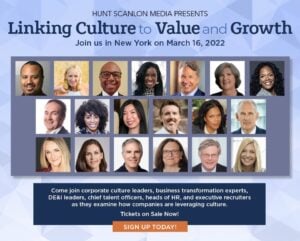Hiring Optimism Grows and Jobless Claims Fall to New Low

November 11, 2021 – The Labor Department reported that 267,000 Americans have filed new claims for state unemployment benefits, a decrease of 4,000. This is the lowest level for initial claims since March 14, 2020 when it was 256,000. The previous week’s level was revised up by 2,000 from 269,000 to 271,000.
The four-week moving average was 278,000, a decrease of 7,250 from the previous week’s revised average. This is the lowest level for this average since March 14, 2020 when it was 225,500. The previous week’s average was revised up by 500 from 284,750 to 285,250.
“Overall, the downtrend in filings is continuing and the level is moving closer to pre-pandemic levels,” said Rubeela Farooqi, chief U.S. economist at High Frequency Economics. “Businesses facing labor shortages are likely retaining rather than laying off workers.”
“The dog days of summer are long gone and the U.S. economy is gearing up for an acceleration in growth and activity in the fourth quarter,” said Brian Bethune, a professor of practice at Boston College. “Demand for labor is strong, but there is an issue with matching people with the jobs that are available.”
“Demand for labor is very strong and workers are in short supply, so layoffs are very low right now,” said chief economist Gus Faucher of PNC Financial Services. “The biggest problem for the labor market in late 2021 is too few workers.”
Maximum Employment
Some economists believe the economy is close to maximum employment. “Unless people start flocking back into the labor market and the labor force starts to surge, we could very likely reach that level by the end of next summer, if not sooner,” said Joel Naroff, chief economist at Naroff Economics. “That means we could see the initial rate hike by early fall. Economists are starting to forecast two rate hikes next year and that is quite possible.”
The government reported last Friday that the economy added 531,000 jobs in October, with annual wage growth the largest in eight months. The labor force is down 3 million from its pre-pandemic level, making it harder to fill the 10.4 million job openings as of the of August.
During the week, 42 states reported 253,593 continued weekly claims for Pandemic Unemployment Assistance benefits and 43 states reported 256,496 continued claims for Pandemic Emergency Unemployment Compensation benefits. The highest insured unemployment rates were in Puerto Rico (3.7), California (2.8), District of Columbia (2.5), New Jersey (2.5), the Virgin Islands (2.5), Alaska (2.4), Hawaii (2.4), Illinois (2.2), Nevada (2.2), and Oregon (1.9). The largest increases in initial claims were in Kentucky (+2,882), Louisiana (+907), Minnesota (+885), Tennessee (+798), and New Jersey (+768), while the largest decreases were in Missouri (-3,014), Florida (-2,286), Virginia (-1,482), Oklahoma (-1,324), and Pennsylvania (-1,026).
What’s Ahead
Employers in 32 percent of U.S. businesses surveyed expect an increase in payrolls during the next three months, while three percent expect to trim payrolls and 63 percent anticipate no change, according to the latest “Employment Outlook Survey,” released by ManpowerGroup.
“This recovery is unlike any we have seen before with hiring intent picking up much faster than after the previous economic downturn,” said Jonas Prising, ManpowerGroup chairman and CEO. “As vaccine rollouts gain momentum and lockdown restrictions ease in many markets, we’re seeing sharp increases in hiring optimism reported by employers. At the same time, some workers are hesitant to re-engage with employers as factors including health concerns and childcare challenges continue. Continued talent shortages mean many businesses are prioritizing retaining and training workers with the skills they need to succeed as the economic recovery continues.”
Related: Major Paradigm Shifts Coming Out of the Coronavirus Crisis
Contributed by Scott A. Scanlon, Editor-in-Chief; Dale M. Zupsansky, Managing Editor; and Stephen Sawicki, Managing Editor – Hunt Scanlon Media













